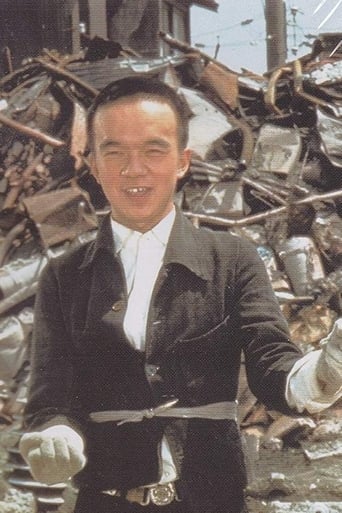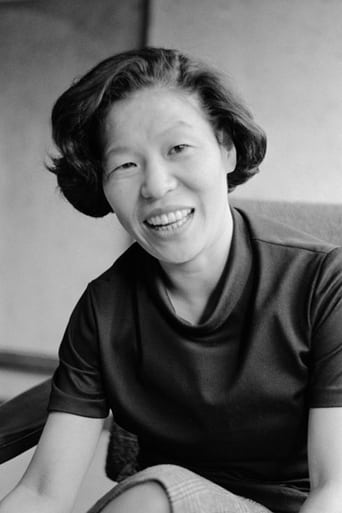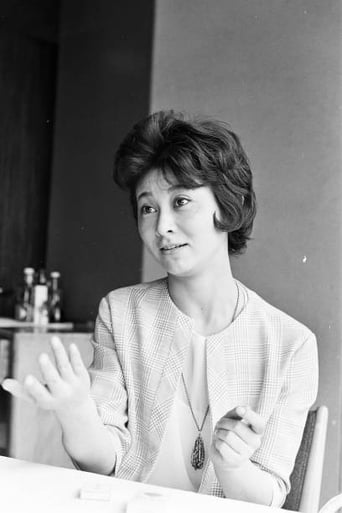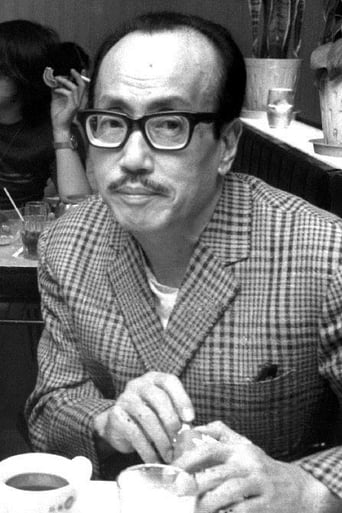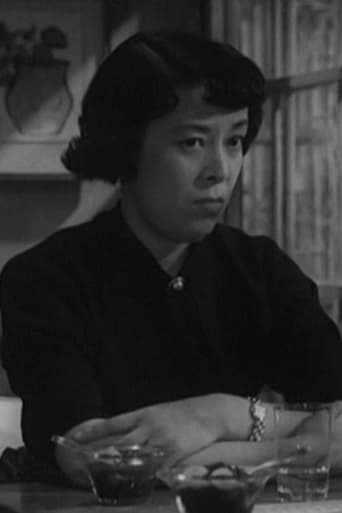Mjeteconer
Just perfect...
Phonearl
Good start, but then it gets ruined
Fairaher
The film makes a home in your brain and the only cure is to see it again.
Lachlan Coulson
This is a gorgeous movie made by a gorgeous spirit.
alexdeleonfilm
When Dodeskaden first came out, both here and in Jaoan, it was not too well received, but it has slowly picked up a following and come to be recognized as the masterpiece which it undoubtedly is. Perhaps the main reason for the earlier mixed reception of this film was the fact that audiences had come to expect a certain type of film from Kurosawa -- a film with lots of action, a definite story line, and, especially lots of Mifune. "Dodeskaden", a Fellini like portrait of a shanty town built from the debris of the Tokyo city dump and populated by the dregs of society with no plot to speak of and no central swashbuckling hero was just too different and too far out for a lot of people to accept.Of course it is not unusual for the public to find it difficult to accept a radical change in style from an established director. When Hitchcick came out with "The Birds" a lot of people accused him of sensationalism, senility, and everything else -- Now, a dozen years later, it is generally recognized as one of his masterpieces. "Dodeskaden" was also Kurosawa's first color film and, like Fellini and Antonioni before him, when he finally turned to color he went directly to surrealistic expressionism. As Antonioni in "Blowup" he had whole areas of ground -- earth, that is -- painted in bright colors to suit his vision for certain scenes, and in general the use of color in the film is not only spectacular but ingenious. Now. that the world has, shall we say "caught up with" Kurosawa --viz-a-viz the absurdity of real life in 1975 -- the absurd world of Dodeskaden 1970 may now be seen as not so far-out after all. At any rate a second look should certainly be a rewarding experience.As for the title, DO-DES- KA-DEN is the sound that a trolley car makes, something like clackety-clack or the like. Rokuchan, a strange but jolly teenage boy who has a thing about trolleys, makes a daily round of the shantytown in an imaginary trolley car, shooing people from the "Tracks", picking up and discharging invisible passengers, and busily shouting "dodeskaden" as he goes on his merry way.Taking Rokuchan's trip with him around Hovel city we encounter, among others, two low class bums who drink heavily and trade wives -- associated with wife-swapping in the suburbs -- a striking comment on today's corrupt suburban mentality. The whole film is, in fact, a commentary on the absurd pretensions of an insane society, and the message if there is one, is perhaps that we would all be a lot better off if we were more accepting of each others foibles. No matter what the content of his films Kurosawa's implied message has always been "Why can't people try to be a bit happier?"Particularly outstanding in a cast loaded with talent is Ban-jun Zaburo, one of the world's cleverest screen comedians, as Mr. Shima, the little man with the epileptic tic and the over-sized limp -- shades of Chaplin at his best -- and Kiyoko Tange is also memorable as his Amazon-like no-nonsense domineering wife."Dodeskaden" is an expressionistic pageant of the Human Comedy that ranks with the best of Kurosawa and, if viewed with an open mind, can only make you feel a little better about being a member of this endangered species.by HERMAN PEVNER (later Alex Deleon) published in the Rafu Shimpo, Little Tokyo Los Angeles, June 1975. image2.jpeg image3.jpeg image4.jpeg
gavin6942
Various tales in the lives of Tokyo slum dwellers, including a mentally deficient young man obsessed with driving his own commuter trolley."Dodesukaden" was Kurosawa's first color film, and is notable for how well he transitioned. After the success of "Red Beard", it took Kurosawa five years before this film appeared. Very few of the actors from Kurosawa's stock company of the 1950s and 1960s were in it, and most of the cast were relatively unknown. "Dodesukaden" was unlike anything Kurosawa had made before. It gained an Academy Award nomination for Best Foreign Film in the 44th Academy Awards.Apparently it did not do well, though, and only added to Kurosawa's depression. The next film didn't come out for another five years, and his output in general greatly slowed down. This film is a prime example of an artist not recognized in his own time. Today Kurosawa is widely considered the greatest Japanese director (with the only real competition coming from Ozu), but apparently this acclaim came later, as he had trouble filling theater seats...
Jason Forestein
Most people, when they think of expressionist cinema, look to the b&w German films of the silent and early sound eras--films that emphasized canted angles, extreme contrasts of light and dark, exaggerated performance, and occasional uses of surrealism to create a dreamlike atmosphere in order to diverge from traditional, naturalistic modes of cinematic representation. If we're willing to accept that the Germans were not the only filmmakers to create expressionist cinema (and that those above-mentioned characteristics are not prerequisites for expressionist film), then I would argue that Dodes'ka-den (DKD) is a prime example of this type of film. Like Dreams, DKD is a little unhinged for a Kurosawa film, dabbling, as it does, in the unreal. However, DKD is also, unlike Dreams, a great film and probably my favorite Kurosawa picture. Why? Mostly, I think, it's the colors. This was, I believe, Kurosawa's first color film, and the man saturates the movie with vibrant primary colors, creating a completely unreal contemporary Japan. We are used to the neon lights and gleaming Tokyo skyscrapers; we are not used to a city that appears to have been colored with crayons. DKD is, as I said, a peculiar film inasmuch as many of its characters live in a junkyard, appearing to live in an alternate universe. That is, I think, the point--these are the Tokyo outsiders, the people left behind during the great move forward following World War II. The film also represents one of Kurosawa's more heartfelt movies; there is genuine sentiment here and genuine pathos (such as when the boy's father describes their dream home). It's an amazingly moving film from a man better known for stunning, John Ford-like vistas and samurais. Everyone should have known Kurosawa had in him a movie as touching and thought provoking as this (Ikiru foreshadows the emotional resonance of this film in many ways). I will also argue, to the last, that this is Kurosawa's greatest achievement. His samurai films, though capable pictures, pale in comparison to works by Kobayashi (Hara-kiri is the greatest, most intelligent samurai film committed to celluloid). Rashomon, Hidden Fortress, Seven Samurai, Yojimbo, Sanjuro, Kagemusha, and Ran are all fine films, but they're merely good (and, frankly, I think that word is too generous for Hidden Fortress and Kagemusha). DKD is a great movie, as is Ikiru. They are the crown jewels that show Akira was not a one-trick samurai pony. They reveal his artistry and mastery of cinema.
MartinHafer
This is one of the weirder movies I have recently watched. That's because it seems less like a movie and more like an experimental film. Kurasawa's experiment was to take a variety of individuals who live at a garbage dump and weave their experiences into a tapestry that offers glimpses of their generally harsh existences. Not every episode is depressing and harsh, but overall this is definitely the tone. Let's see,...we have a case of incest/rape, attempted murder, wife swapping, alcoholism, infidelity, death of a little boy after eating tainted fish, a man with severe depression (he never talks during the movie and looks very scary), a hopeless dreamer who would probably be diagnosed with schizophrenia, a mentally retarded young man who thinks he is a street car conductor and spends all his waking moments "driving" his street car through paths among the garbage piles, a man married to a total shrew (I think I liked her character even less than the incestuous rapist!), etc., etc. In fact, it is depressing enough that it seemed almost like an Ingmar Bergman movie set in Japan, as Bergman made MANY movies that tended to deal with mental illness and the hopelessness of life. Is it any wonder that after making this film Kurasawa tried to kill himself?! So, did I like it? No. It was not a fun experience. But, it was a very well-made movie that definitely kept my attention and as a result, I really wanted to see what happened to these people. It was sort of like watching a train wreck--you don't WANT to see all the carnage but you can't help but watch! Of all the vignettes, I think that the older man who tended to look out for everyone and who didn't really seem to fit in (he was too well-adjusted and wise to be living in a garbage dump) was perhaps meant to represent Kurasawa himself. Maybe. I dunno.If you've seen a variety of Kurasawa films and have a high tolerance for strange art films, give this one a watch. However, do NOT make this your first experience watching his movies--it's sure to scare away many viewers!


